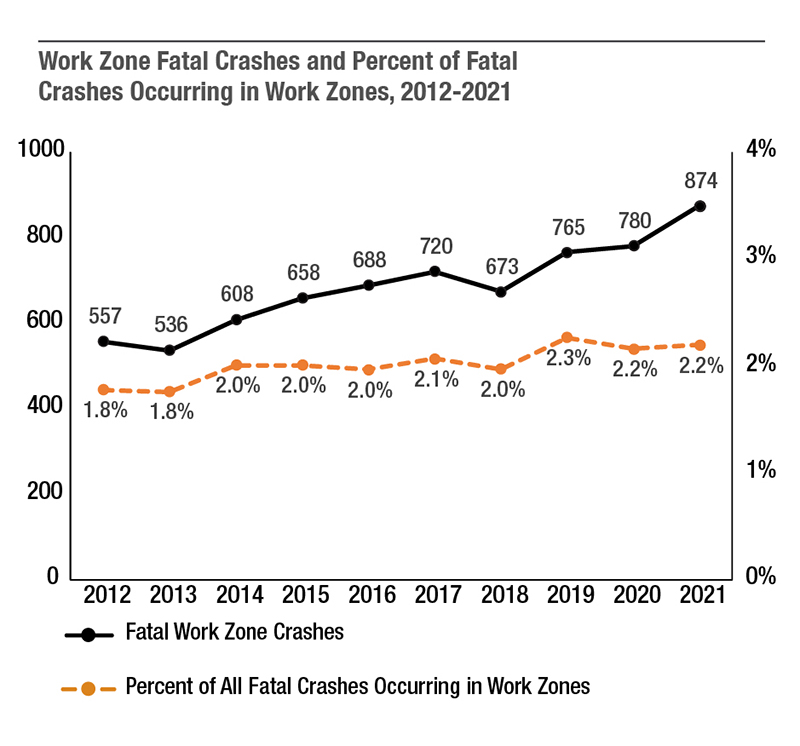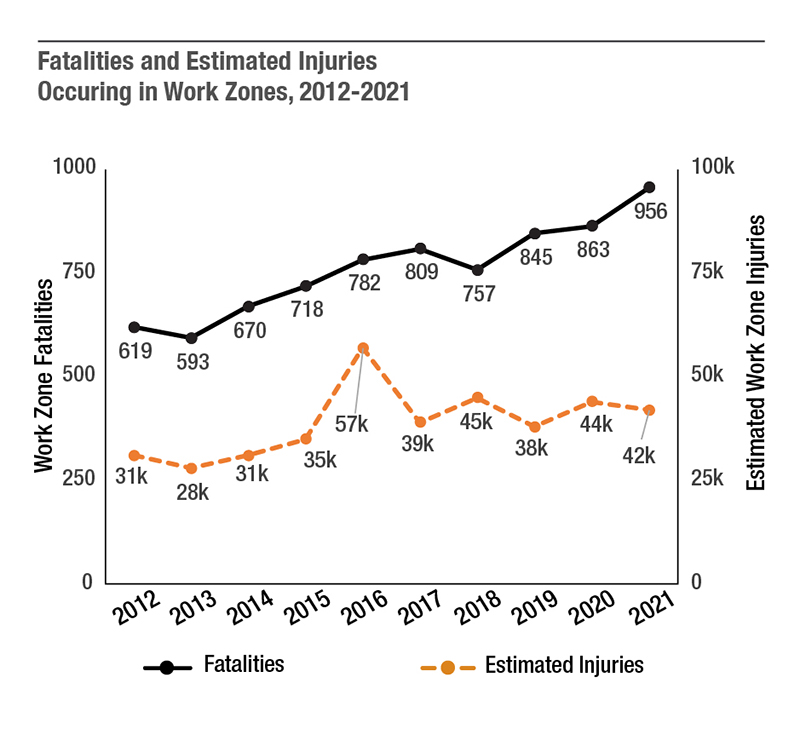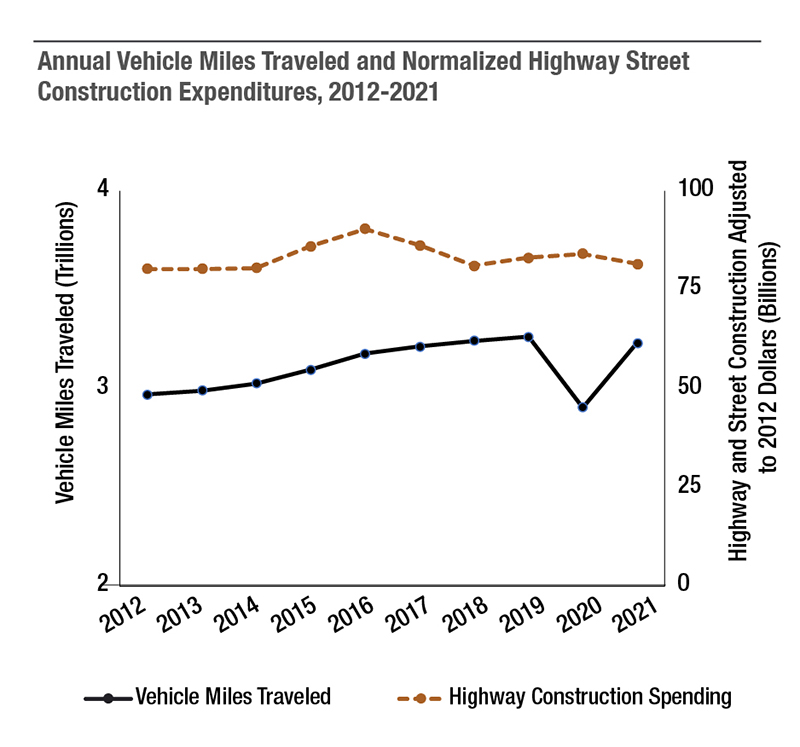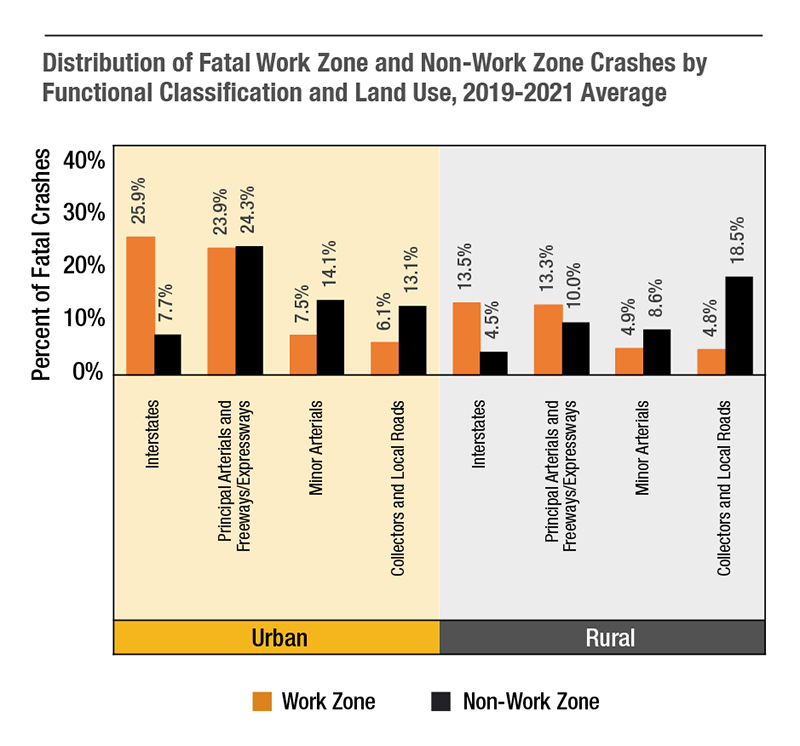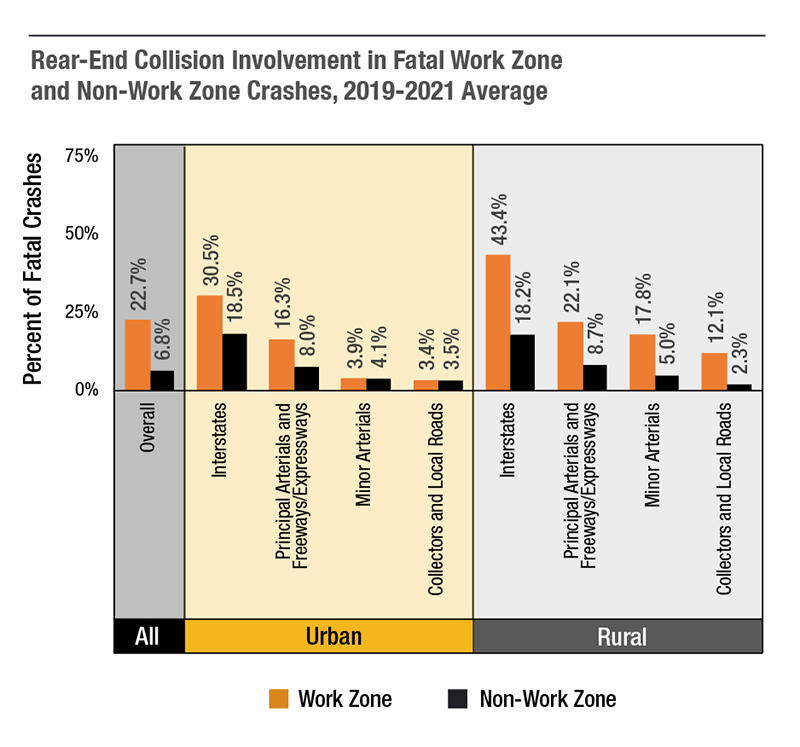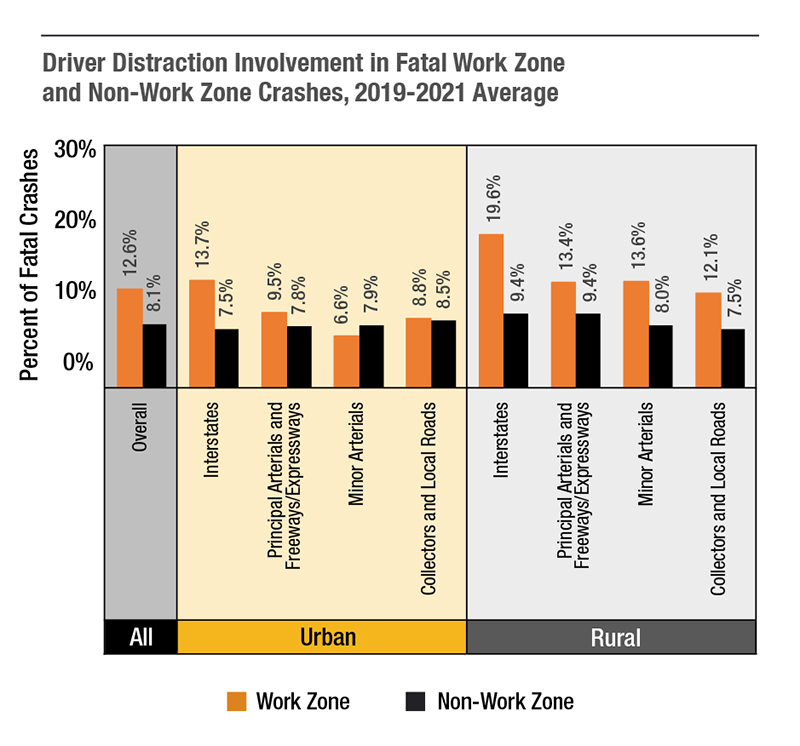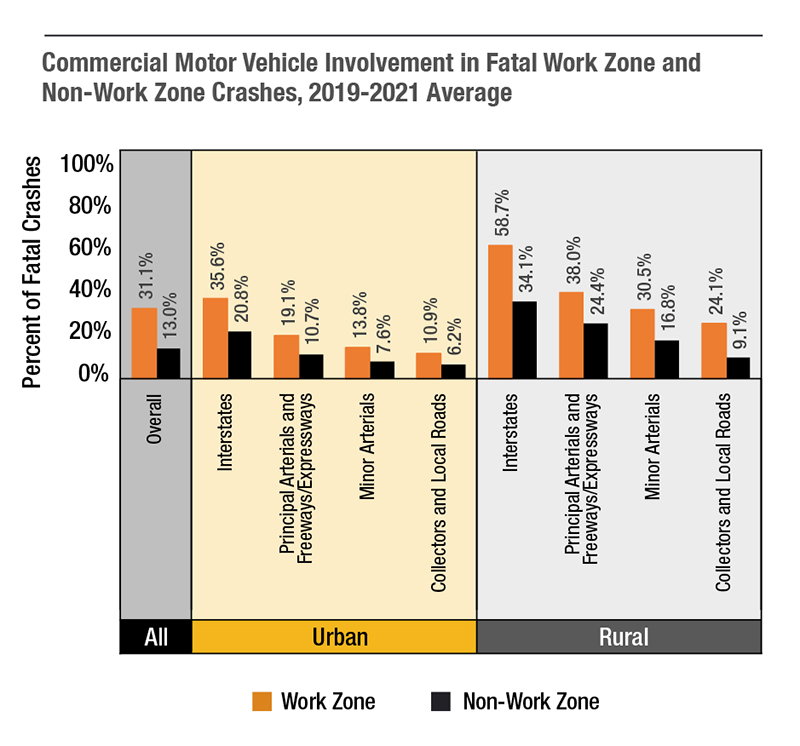Work Zone Data
Work Zone Data
Work Zone Traffic Crash Trends and Statistics
Note:
The National Work Zone Safety Information Clearinghouse is working to update the information on this page to include 2022 NHTSA FARS data. We anticipate the updates will be available in May 2024. In the meantime, please visit the FHWA Work Zone Facts & Statistics website.
Data on fatal traffic crashes in work zones come from the Fatality Analysis Reporting Systems from the National Highway Traffic Safety Administration.1 These data represent crashes coded as occurring in a work zone from all 50 states, the District of Columbia, and Puerto Rico. These data are extracted from law enforcement crash report forms, and as such are only as accurate as the data included in those reports. Estimates of injuries and total crashes occurring in work zones come from the NHTSA Crash Report Sampling System (CRSS) and the General Estimates System (GES).2 Data on annual vehicular travel in the U.S. comes from the Bureau of Transportation Statistics, U.S. Department of Transportation.3 Data regarding Highway and Street Construction Expenditures in the U.S. comes from the Federal Reserve Bank of St. Louis.4
1 Fatality Analysis Reporting System. National Highway Traffic Safety Administration, U.S. Department of Transportation, Washington, D.C. Accessible at https://www.nhtsa.gov/research-data/fatality-analysis-reporting-system-fars.
2 Crash Report Sampling System. National Highway Traffic Safety Administration, U.S. Department of Transportation, Washington, D.C. Accessible at https://www.nhtsa.gov/crash-data-systems/crash-report-sampling-system.
3 U.S. Vehicle Miles. Bureau of Transportation Statistics, U.S. Department of Transportation, Washington, D.C. Accessible at https://www.bts.gov/content/us-vehicle-miles.
4 Total Construction Spending: Highway and Street in the United States. Federal Reserve Bank of St. Louis, St. Louis, Mo. Accessible at https://alfred.stlouisfed.org/series?seid=TLHWYCONS.
